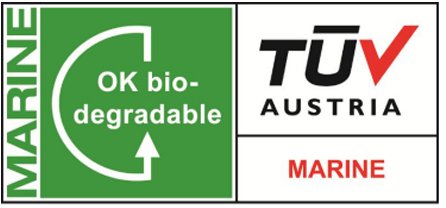To prevent non degradable waste plastic from polluting the oceans, many countries have imposed a total ban on single-use plastic products such as straws, cutlery, and cotton swabs starting in 2021.

2021 came as scheduled under the epidemic grip, at the same time, laws and regulations also came into effect and implemented on time, at this time, disposable biodegradable dinnerware was once again pushed to the limelight, so what’s degradable meaning?What are the classifications of common degradable plastics? What are the reaction conditions of biodegradable plastics?
Degradation definition: The process of significant structural changes and loss of properties (such as integrity, relative molecular mass, structural or mechanical strength) after a certain period of time and containing one or more steps, influenced by environmental conditions
What’s difference between degradable plastic,biodegradable plastic ad compostable plastic?
Degradable plastic
Degradable plastics include those that can be degraded by physical and biological factors (light or heat, or microbial action).
Biodegradable plastic
biodegradable plastic refer to plastics that can be degraded by microorganisms (such as bacteria, molds and algae) through their life activities in nature.
The mechanism of action is generally divided into biophysical and biochemical effects.
Compostable plastic
Compostable plastics are those that can be biodegraded by microorganisms and meet the time requirements of laws and regulations.

What are the reaction conditions of degradable plastics?
Degradable plastic
Accelerated degradation by catalysts or activators at high temperatures or photobiodegradable starch-polyethylene plastics can create some environmental problems. These materials do not degrade as fast as compostable plastics and may also leave fragments.
The water-repellent debris formed by these degradations has a large surface area and may migrate into groundwater and soil, adsorbing and retaining some water-repellent, highly toxic substances such as PCBs and DDT on their surfaces, resulting in toxic substance levels up to 1 million times the background level, sufficient to act as a delivery system for toxic substances in the environment. Therefore, it is important to ensure that the product is completely biodegradable within a very short period of time as determined by the treatment facility.
Biodegradable plastic
Polymeric materials that are completely converted to CO2 and H2O within 180 days by the life activity of microorganisms (such as bacteria, molds and algae) under nature. They can be divided into bio-based biodegradable plastic(including PLA, PHA, etc.) and petroleum-based biodegradable plastic(including PBAT/PBS, PCL, etc.) according to the source of raw materials. Among them, petroleum-based biodegradable plastichave better thermal stability, mechanical strength and film-forming properties.
While PBAT raw materials are PTA, BDO and adipic acid.
This complete microbial digestion/utilization is measured by testing whether the carbon element of the test plastic can be completely converted to CO2 by the microbial processes occurring in the cells.
Compostable Plastic
In ASTM 6400 (Specification for Compostable Plastics), ASTM D6868 (Specification for biodegradable plastic for Surface Coating of Paper or Other Compostable Media) or EN 13432 (Compostable Packaging) standards, it is stated that these materials should biodegrade in an industrial composting environment in less than 180 days. Industrial composting environment means that the specified temperature is about 60°C and microorganisms must be present. According to this definition, compostable plastics do not leave fragments in the residue that exist longer than about 12 weeks, do not contain heavy metals or toxic substances, and can sustain plant life.
Comparison of raw material properties and usage for biodegradation dinnerware
PLA reusable dinnerware is popular in 2020,it's new material for reusable dinnerware and has many advantages, At same time,many customer asked what’s PLA and where raw material come from?
In addition to PLA, what other biodegradable materials are also suitable for making reusable dinnerware?
| Name | Production | Specie | Pros and cons | Pathway |
| PLA | Polyester chemically synthesized with lactic acid as the monomer of microbial fermentation product | L-PLA,D-PLA and DL-PLA | Good moisture resistance, grease resistance and airtightness, stable performance at room temperature, good modulus and gloss, good bio compatibility | When the temperature is higher than 55℃ or under the action of oxygen and microorganisms, it will automatically degrade to produce carbon dioxide and water |
| PBS | Using aliphatic acid and butanediol as raw materials, it has a petrochemical route and can also be produced by biological fermentation | PBS,PBA,PBSA and PBAT | The source of raw materials is rich, the production process is simple, and a large amount of calcium carbonate, starch and other fillers can be blended with low cost, good mechanical properties, processing properties and thermal stability; general modulus and gloss | Degradation occurs only when it is exposed to specific microorganisms such as compost, and the degradation rate,especially the disintegration rate, is slightly slow |
| Element | PLA | PBS/PBSA | PBAT |
| Heat resistance | ↑↑ | ↑ | ↑ |
| Film forming performance | ↓ | ↑↑ | ↑ |
| hardness | ↑ | ↓↓ | ↓ |
| Mechanical strength | ↑↑ | ↑ | ↑ |
| Hydrolysis resistance | ↓ | ↑ | ↑ |
| Transparency | ↑ | ↓ | ↓ |
| price | ↓↓ | ↑↑ | ↑↑ |
What are the relevant international standardization bodies for biodegradable performance testing?
The authoritative international certification for biodegradable plastic include BPI certification in the United States, DIN CERTCO certification in Germany, TÜV AUSTRIA certification in Belgium and so on.
For biodegradable plastics, there are two different types of standards: the testing standard and the product standard.
The testing standard describes the test methods and the way to draw conclusions in a comprehensive manner.
The product standard specifies the requirements that the product needs to meet.
These two types of standards are usually complementary and supplementary, but it is the latter, the product (specification) standard, that ultimately determines whether a product meets the specification.
International standardization bodies that have developed standards related to biodegradable plastic include ISO, CEN and ASTM International.

According to the different disposal environments after use, biodegradable plastic are mainly divided into industrial compostable plastics, home compostable plastics, soil biodegradable plastic and seawater biodegradable plastics.
Industrial composting related standards
European standard EN 13432 applies to biodegradable plastic packaging for industrial composting, which requires at least 90% disintegration rate after 12 weeks and at least 90% biodegradation rate within 6 months, as well as ecotoxicity test and heavy metal content test.
The certification marks for industrially compostable plastic products are Seedling, DIN-Geprüft Industrial Compostable, OK Compost and BPI Compostable.

Home composting related standards
The evaluation standard system of home compostable plastics has only a few national standards, such as Australia's AS 5810 "biodegradable plastic suitable for home composting". According to European Bioplastics, the European Committee for Standardization CEN is developing a standard for home compostable plastic shopping bags.
Belgian certification body Vinçotte has developed the OK Compost Home certification program, which requires a biodegradation rate of at least 90 percent at ambient temperatures over a 12-month period. In addition to OK Compost Home, the certification mark for home compostable plastic products is DIN-Geprüft Home Compostable.

Biodegradability in soil
The certification scheme "Bio products - degradation in soil" developed by TÜV AUSTRIA Belgium (formerly Vinçotte) is based on the standard EN 13432 / EN 14995. The test requires a biodegradation rate of at least 90% at ambient temperature within 2 years.
The standard EN 17033 "Requirements and test methods for biodegradable mulch for agriculture and horticulture" specifies the requirements for biodegradable mulch, which is used for ground cover in agriculture and horticulture and is not removed after use. It requires a biodegradation rate of at least 90% at 25°C for 2 years.
The certification mark "OK biodegradable Soil" is awarded by the institute TÜV AUSTRIA Belgium (when the product meets the requirements of its certification scheme). The DIN-Geprüft biodegradable in Soil mark is awarded by the certification body DIN CERTCO according to CEN/TR 15822.

Biodegradability in seawater
There is no product standard for seawater biodegradable plastics; ASTM D7081, Standard Specification for Non-Floating biodegradable plastic in the Marine Environment, was withdrawn in 2014. However, the referenced test standards still exist, including ASTM D6691, Standard Test Method for the Determination of Aerobic Biodegradability of Plastic Materials in the Marine Environment Using Prescribed Microbial Colonies or Natural Seawater Cultures, ASTM D6692, Standard Test Method for the Determination of Aerobic Biodegradability of Plastic Materials by Radioisotope Tracing in Seawater, and OECD 306 "Biodegradability in Seawater" and ISO 16221 "Guidelines for the Determination of Biodegradability in the Marine Environment of Water Quality", etc.
The Belgian body TÜV AUSTRIA (formerly Vinçotte) has developed a certification scheme based on the withdrawn standard ASTM D7081, which in simple terms requires biodegradable products to achieve at least 90% degradation within 6 months. The corresponding certification mark is OK biodegradable Marine, and the "OK biodegradable MARINE" certification scheme is only for a few products that are actually used in the marine environment, such as fishing line.



